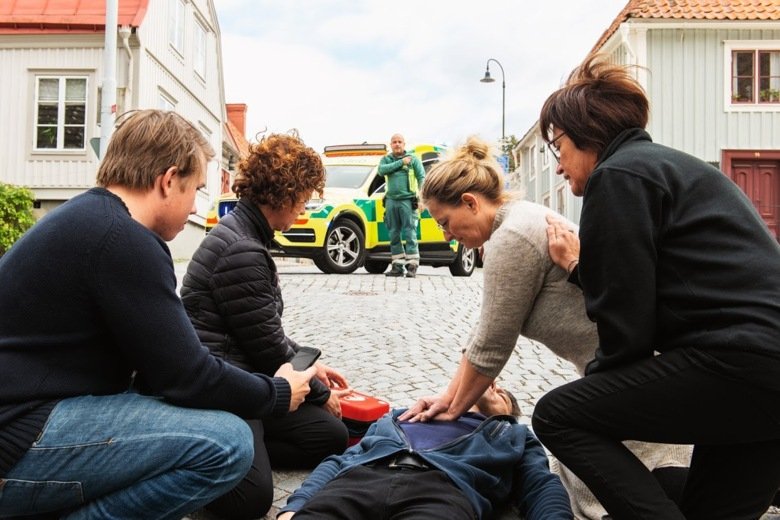Saving lives with a smartphone
In Sweden, there are currently some 21,000 volunteers ready to respond to help cardiac arrest victims. A smartphone alert system guides them directly to victims – often faster than ambulances. The service, the result of research carried out at the Centrum för Hjärtstoppsforskning, is now ready for export markets.

In the event of a cardiac arrest, an alert is triggered on the smartphones of volunteer lifesavers located within a radius of around 1,500 metres from the victim. Those who are able to do so, confirm the alarm and make their way as quickly as possible to the victim.
“There’s a fantastic willingness from society to contribute. I wouldn’t have expected this to be this big before we launched the service”, explains Jacob Hollenberg, associate professor and director of the Centre for Resuscitation Science at Karolinska Institutet.
Today, the system has been scientifically proven with excellent results. The research group has succeeded very well in publishing its results. In 2015, two articles were published in NEJM, and in 2017 one in JAMA.
“Text message-lifesavers [SMSlivräddare] make a vital contribution to the survival chances of cardiac arrest victims. This is a great example of applying modern technology, citizen engagement and research to save lives,” says Hollenberg.
Karolinska Institutet and KI Innovations encouraged the researchers behind the initiative to commercialise the idea early on to spread its benefits in society.
“Many researchers dream of being involved with implementing scientific discoveries that make a difference to people’s everyday lives. KI Innovations makes a genuine difference by helping us towards this goal,” says David Fredman, who today is operations manager for the service and previously worked on the research team.
Now live in four regions
The SMSlivräddare service is run and developed by the company Heartrunner Sweden, and is now live in four regions in Sweden: Stockholm, Västra Götaland, Sörmland and Västmanland, and the service could be introduced across the country.
“Every region that works with SOS Alarm [emergency medical dispatch service] on ambulance prioritisation and dispatch can opt in to activate the service in their region,” says Fredman.
Furthermore, the service has also been exported to Denmark, where it has been introduced in two of the country’s regions.
“We want to access the rest of Europe, but need to co-operate with local organisations to get any headway. Our task is not only to install the IT system, but to recruit volunteers and prepare emergency medical services for the fact that they will receive help on the ground.”
At first, there was concern that volunteers may prevent emergency staff from doing their job in critical situations. Something that has been shown not to be the case.
“Now we have emergency medical services asking to be connected to the system because they see how it makes their job easier,” says Fredman.
Quick facts
Emergency service drones
The Centrum för Hjärtstoppsforskning also runs a project exploring how to equip drones with heart resuscitation equipment and deploy them quicker than ambulances. Technological development is continuing in the hope of having drones airborne in the next two years. The potential of using teaching systems to help emergency call handlers identify cardiac arrests early is also being studied.
